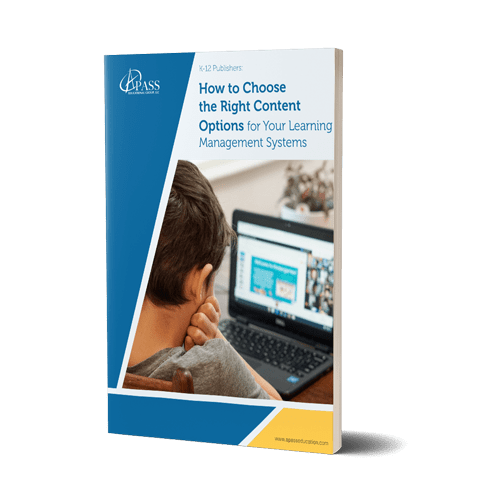Quality curriculum development means combining educational standards, subject matter expertise, and instructional design into a cohesive flow that is appropriate for the target learner. There are four broad steps to the curriculum development process. These steps require collaboration and trust so that instructional designers, subject matter experts, project managers, and copy editors can create effective content.
1. Gather
The first step of the curriculum development process involves planning and determining who the learner is and what they need to get out of the material. The team begins by initially identifying what the scope is. Some examples of questions to ask at this stage are:
- Who is the learner?
- What does the learner already know?
- What will the learner need to be able to do?
- How will the learner be assessed?
- What format will the learner be utilizing?
The curriculum development team will also need to determine what kind of curriculum model they want to use. Depending on their ultimate goals, the team may try a product, or objectives, model. This method focuses on results, outcomes, and evaluations. It is a more rigid model but provides a helpful framework for preparing for quantitative learning assessments like standardized tests. Another popular curriculum model is a process model. The process model focuses on how students are learning and their thoughts on that learning. It is a more open-ended model than the product model, allowing for growth over time. The team may also decide that combining the two styles will give learners the best outcome.
It takes a team to develop excellent curriculum. Each step involves collaboration and constant iterations of the material. Share on XInterested in learning more about our approach to curriculum development? Visit our Services page.
2. Design
Now that the curriculum development team understands who the learner is and what the learner needs to be able to do, they are ready to design. They’ll need to think about their approach; will it be subject-centered, problem-centered, learner-centered, or a combination? They’ll also choose measurable objectives for each unit, lesson, and/or class session. Clear objectives include action words such as:
- Identify
- Modify
- Explain
- Evaluate
As the instructional designers create the objectives, they carefully connect them to the content. The team examines the environment in which the content will be used. They ask questions such as:
- How will learners be accessing the content?
- What materials will the learners need?
- How will we assess learning?
Download and share Curriculum Design Process
3. Build
After mapping the content and determining if other materials are needed, the curriculum development team is ready to build the content into workable instructional units. As the material is being built, there is constant communication between team members. Project managers handle the flow of work and oversee timelines. Writers write the lessons that students and/or teachers will use. Copy editors work to keep the content consistent by ensuring the work is in the correct style and lines up with the learning objectives. Graphic designers develop art, video or animation. Instructional designers check that the material will lead to measurable outcomes. Multiple iterations occur as material is discussed between team members.
4. Evaluate

The final step of the curriculum development process is evaluation. While the material has been evaluated by all the curriculum development team members throughout the process, this final step is to make sure that the content is the most effective it can be for the target learner. That means objectives are aligned with the chosen educational standards and the material is consistent and developmentally appropriate. Ideally, this stage can involve piloting the curriculum in the actual learning environments where it will be used. That way, the curriculum development team can implement feedback from those using their curriculum. As a result of this teamwork and dedication to the learner, it is possible to build a curriculum that helps all learners reach desired outcomes.





